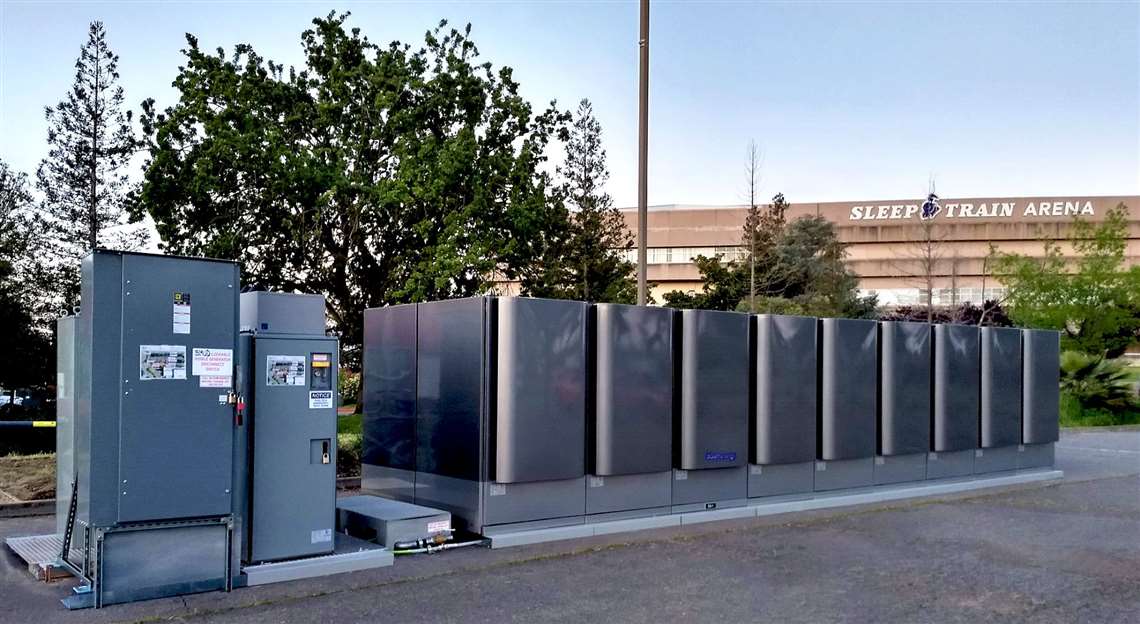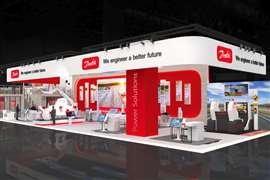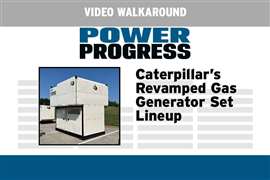Fuel Cells For COVID-19 Field Hospitals
06 May 2020

California standby power projects for potential patient overflow
By Mike Osenga
Throughout the U.S., the health care industry, as well as cities, counties, states, and other units of government, have been preparing for the worst as far as handling COVID-19 cases. With some expectations of a surge in patients overwhelming existing health care facilities, at some undetermined time in the future, many areas have made contingency plans to handle patient overflow.
Pictures have been widely circulated, for example, of temporary facilities being built in New York’s Central Park to handle overflow cases or to move other patients to make room for COVID-19 patients.
In California, a hospital parking lot, and the building where the NBA’s Sacramento Kings used to roam the hardwood, are among two of the sites selected and converted to temporary facilities to handle potential patient overflow.
These temporary facilities need power, power that can function with on-site medical equipment, just like permanent operations. In an interesting twist on all this, Bloom Energy, San Jose, Calif. said it has installed two “rapid-deployment” fuel cell power generation projects that will support patients in these two secondary locations.

The first project – in the Vallejo, Calif., — is in the parking lot of a national hospital system. Bloom said it deployed a microgrid using the company’s Energy Servers fuel cell system capable of powering a field hospital in the main hospital’s parking lot to accommodate patient overflow, if needed.
Bloom already has 1200 kW of Energy Servers modules providing prime power for the main hospital. It added a 400 kW system and installed the microgrid in only three days – five days ahead of schedule. Bloom said the microgrid is virtually vibration free and quiet, eliminating potential shaking related damage to sensitive medical equipment and disruption to the local community. Bloom said the installation is also compact, occupying only three parking spaces at the site.
“Our modular energy servers were designed with ‘quick time to power’ as an important value proposition,” said Bloom Energy founder, chairman, and CEO, KR Sridhar. “We advanced our rapid deploy microgrid offering greatly after the Public Safety Power Shutoff (PSPS) events last year to help customers affected by the wildfire related power outages in California. In the future, we will be able to use this solution for other rapid deploy scenarios for emergency management.”
The State of California also called on Bloom to deploy a primary power energy solution at Sleep Train Arena, the former home of the Sacramento Kings basketball team. The system will support a field hospital being assembled by the State to treat overflow COVID-19 patients. Bloom has installed a 400 kW fuel cell-based microgrid to power a facility on site that will hold approximately 100 hospital beds.
“We partnered with Bloom Energy to quickly provide an on-site, reliable power solution and back-up capabilities,” said California Governor’s Office of Emergency Services deputy director, Ryan Buras. “Bloom’s microgrid solution dramatically reduces electricity costs and greenhouse gas emissions, which fulfills our commitment to providing clean and affordable energy during this pandemic.”
Bloom said the project at Sleep Train Arena, was deployed in less than two weeks. The company said it is working with the State of California and other essential businesses to explore additional opportunities for rapid deployment of energy solutions to support pandemic response efforts.
In both applications, Bloom said it has a 24/7 remote monitoring and control center that keeps an eye on all its systems, primary power or microgrid alike.
Bloom describes the Energy Servers platform “as a distributed power generation system that provides always-on primary power that is customizable.” The company said it converts natural gas or renewable biogas into electricity using a direct electrochemical reaction without combustion.
In its simplest terms, Bloom said fuel (natural gas or biogas) passes over an anode, while air passes over a cathode. The oxygen ions react with fuel in the fuel cell and the reaction produces electricity.
The components of the Energy Server units include a fuel cell, a fuel cell stack, a 50 kW module and then four, five, six (or more) modules make up the various Energy Servers installations.
Bloom Energy said its Energy Server units are available in 200, 250, and 300 kW modules; all providing 480V, 60 Hz, 3-phase power, and can be interconnected to create larger systems. The company said the sets are capable of emergency stop based on input from the site. The systems comply with Rule 21 interconnection and IEEE 1547 standards, Bloom said.
Bloom lists each module as weighing 12.6 tons and lists noise levels of less than 70 dBA at 6 ft., adding that the modules are exempt from California air districting permitting and meets CARB 2007 emissions standards.
For more information see: https://www.bloomenergy.com/
POWER SOURCING GUIDE
The trusted reference and buyer’s guide for 83 years
The original “desktop search engine,” guiding nearly 10,000 users in more than 90 countries it is the primary reference for specifications and details on all the components that go into engine systems.
Visit Now
STAY CONNECTED




Receive the information you need when you need it through our world-leading magazines, newsletters and daily briefings.
CONNECT WITH THE TEAM












